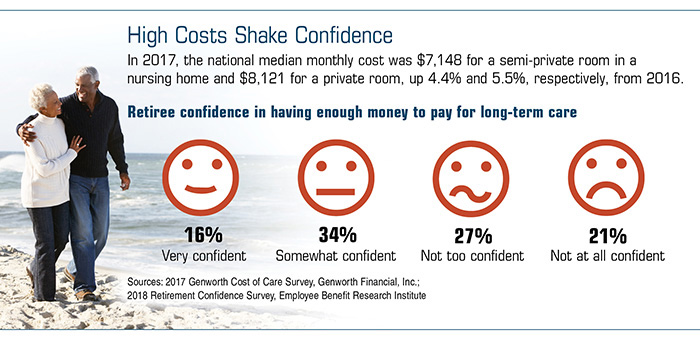The Ultimate Guide To Pacific Prime
The Ultimate Guide To Pacific Prime
Blog Article
About Pacific Prime
Table of ContentsA Biased View of Pacific PrimeThe Pacific Prime DiariesRumored Buzz on Pacific PrimeThe Best Guide To Pacific PrimeThe Definitive Guide to Pacific Prime

This is since the information were collected for a period of solid economic efficiency. Of the estimated 42 million people that were without insurance, all however concerning 420,000 (about 1 percent) were under 65 years of age, the age at which most Americans become qualified for Medicare; 32 million were grownups in between ages 18 and 65, about 19 percent of all adults in this age team; and 10 million were children under 18 years of age, regarding 13.9 percent of all youngsters (Mills, 2000).
These quotes of the variety of individuals without insurance are created from the annual March Supplement to the Existing Populace Survey (CPS), conducted by the Demographics Bureau. Unless or else kept in mind, national estimates of people without medical insurance and percentages of the populace with different sort of insurance coverage are based upon the CPS, one of the most extensively used source of price quotes of insurance coverage and uninsurance prices.
How Pacific Prime can Save You Time, Stress, and Money.

Still, the CPS is particularly helpful because it creates annual estimates reasonably quickly, reporting the previous year's insurance policy coverage estimates each September, and due to the fact that it is the basis for a regular set of price quotes for greater than twenty years, permitting for analysis of patterns in protection in time. For these reasons, in addition to the considerable use the CPS in various other research studies of insurance protection that are provided in this report, we count on CPS price quotes, with restrictions noted.

The estimate of the variety of uninsured people broadens when a population's insurance policy status is tracked for numerous years. Over a three-year period starting early in 1993, 72 million individuals, 29 percent of the U.S. https://www.indiegogo.com/individuals/37416909. populace, lacked coverage for at the very least one month. Within a single year (1994 ), 53 million individuals experienced at least a month his response without insurance coverage (Bennefield, 1998a)
6 out of every ten uninsured adults are themselves used. Although working does improve the possibility that one and one's household participants will have insurance coverage, it is not an assurance. Even participants of households with 2 full time wage income earners have practically a one-in-ten possibility of being uninsured (9.1 percent uninsured price) (Hoffman and Pohl, 2000).
The 8-Second Trick For Pacific Prime
New immigrants represent a substantial proportion of people without wellness insurance. One analysis has associated a significant portion of the recent growth in the size of the U.S. uninsured populace to immigrants that showed up in the nation between 1994 and 1998 (Camarota and Edwards, 2000). Recent immigrants (those that came to the United States within the past four years) do have a high rate of being uninsured (46 percent), however they and their kids represent just 6 percent of those without insurance coverage across the country (Holahan et al., 2001).
The partnership in between wellness insurance policy and access to care is well established, as documented later in this phase. The partnership between health insurance coverage and health results is neither straight neither simple, a comprehensive medical and health solutions study literature links wellness insurance coverage to better access to care, better top quality, and enhanced personal and populace health and wellness status.
Degrees of evaluation for taking a look at the impacts of uninsurance. This discussion of medical insurance protection focuses primarily on the united state population under age 65 due to the fact that practically all Americans 65 and older have Medicare or other public protection. Furthermore, it concentrates specifically on those without any kind of wellness insurance policy for any size of time.
Indicators on Pacific Prime You Need To Know
The issues encountered by the underinsured remain in some respects similar to those dealt with by the uninsured, although they are usually much less extreme. group insurance plans. Uninsurance and underinsurance, nevertheless, involve noticeably different policy problems, and the strategies for addressing them might vary. Throughout this research and the five records to follow, the major emphasis is on individuals without any medical insurance and thus no help in spending for healthcare beyond what is available through charity and security internet establishments
Medical insurance is a powerful variable impacting invoice of treatment due to the fact that both clients and medical professionals respond to the out-of-pocket price of services - https://giphy.com/channel/pacificpr1me. Medical insurance, nonetheless, is neither necessary nor enough to acquire accessibility to clinical solutions. The independent and direct effect of wellness insurance policy protection on access to health services is well developed.
Others will acquire the health and wellness care they need even without wellness insurance coverage, by spending for it expense or seeking it from suppliers who use care totally free or at very subsidized rates. For still others, wellness insurance coverage alone does not ensure receipt of care because of other nonfinancial barriers, such as a lack of wellness care carriers in their area, minimal accessibility to transportation, illiteracy, or linguistic and cultural differences.
Getting My Pacific Prime To Work
Formal research about uninsured populations in the United States dates to the late 1920s and early 1930s when the Committee on the Cost of Healthcare generated a collection of records about financing physician office sees and hospital stays. This concern ended up being prominent as the varieties of medically indigent climbed up throughout the Great Anxiety.
Report this page